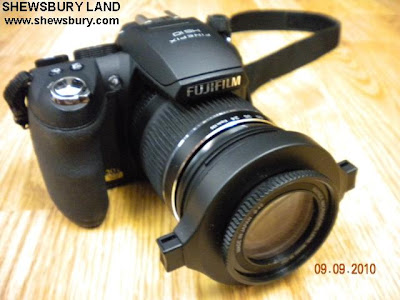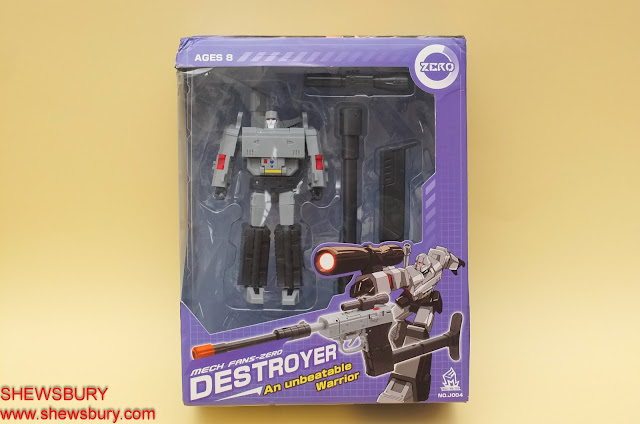Amateur guide for Raynox DCR-250 Macro Lens
Since we published our review of the Raynox DCR-250 Macro Lens in here, I received lots of e-mail asking about this lens. Some asking about the quality, some asking about the result and there are also some people who asked for help on how to use the lens.
So to make it simple and so that I can just give the link on this article rather than typing it over and over again (as I used to delete all the e-mails from all folders to keep it clean), here it is now some amateur guide on how to use the Raynox DCR-250 Macro Lens on your camera.
If you want to read the Raynox DCR-250 Macro Lens review, you should click here.
Alternately, you can see some additional sample photos from the links below;
http://www.shewsbury.com/2010/07/macro-photography.html
http://www.shewsbury.com/2010/07/fly-v1.html
http://www.shewsbury.com/2010/08/morning-in-park.html
You can also visit the manufacturer website, just click this link = Raynox Japan.
If you want to buy this lens, you can search in E-Bay, or you can also buy directly from McGill Singapore - they can cater the order from the local customer in Singapore and they also handle online purchase for both Singapore and overseas customer. They will use either EMS or FedEx courier services for delivery and payment for online order is thru PayPal. Customer in Singapore can choose to pay using cash or ATM fund transfer services.
Visit their website for further information = http://www.mcgill.com.sg/shop/
Now, back to this guide, it's not great but this is the best way I could think off, I just hope that this can be useful or helpful to those who are in need.
In this example, I am using Fujifilm HS10, our current camera.
The Raynox DCR-250 is now attached onto the camera lens.

In this example, I just use 135mm zoom power. Please take note that this Raynox DCR-250 Macro Lens work best with telephoto zoom lens but that doesn't mean it will work on the full telephoto length.
If you use the Raynox DCR-250 on Wide Angle settings, you will see heavy vignetting, but as you zoom further, the vignetting will be gone, which is why you should use this on telephoto/zoom lens.

My camera have 30x zoom (up to 720mm) and from my experience, the lens doesn't work at full 30x zoom (720mm).
Usually I just use within the zoom within 80mm to 300mm range.
So if your camera/lens can zoom up to 16x, 18x, 20x, 24x, 26x or 30x zoom - it doesn't mean that you will straight away use it at that length.
Example; for camera with 20x zoom, try to use the mid range - say from 6x zoom to 15x zoom, something like that and from there onwards you can later explore and experiment further.
So from the photo below, this is basically the distance between my camera/lens and the insects. The gold thing represents "the insects" or some will say "the subject"

And please remember that just because you use this Raynox DCR-250, doesn't mean you can take the photo from 2 or 3 meter away. You still need to be near the insects... within reasonable distance as long as not to near coz some insects might be scared and fly/run away when you get too near...
Usually this is the standard distance I use - between 4 inches to 6 inches (10cm to 15cm)


These are the results;


You can see the rest from the links below:
http://www.shewsbury.com/2010/07/fly-v1.html
http://www.shewsbury.com/2010/08/morning-in-park.html
The 2 photos above, have been downsized to 640x480 for easy uploading purpose, no cropping, you will see the same scale even at the maximum 10MP resolution.
So within the initial 4 inches to 6 inches (10cm to 15cm), I will then move my camera forward and/or backward till the subject appear clearly on my LCD/EVF (usually I just use the LCD as the EVF of this Fujifilm HS10 is sucks) and from there onwards I should be able to get the focusing right.


Once you get the feeling on that basic technique, than maybe along the way, you can also adjust the telephoto/zoom accordingly or experiment at different telephoto/zoom settings and distance that suited your camera/lens capability as well as you skill.
This is also one of the reason why I never bother to use tripod for all of my insects macro photography coz some of those insects are quite difficult to deal with, they tend to jump around or fly/run away, while some of them are hiding on certain odd position of a particular plant or flower.
So all of my insects macro photography results so far are purely using hand-held skill... it's not easy, but after lots of practice, I think I can handle it...
This is the result without using the Raynox DCR-250, I set the zoom at 135mm, Macro mode is ON, the distance between my lens and the snake is 4 inches (10cm)

This is the result when using the Raynox DCR-250 (attached to the front of my lens), same zoom settings at 135mm, Macro mode is ON, the distance between my lens and the snake is 4 inches (10cm) - and yet even at 135mm, there is still some slight vignetting.

So as you can see there, this Raynox DCR-250 lens is basically a magnifier, it makes the small insects appear big on your OVF/EVF/LCD and eventually on your photo.
It is a difficult lens to use and one really need decent practice and lots of patience to get the best out of this Raynox DCR-250 lens. In the hands of capable and persistent people who love insects Macro photography a lot (like me - hehehehe), it can produced beautiful result but to some beginners, maybe it can be a daunting task.
So only buy this lens if you really like insects Macro photography. If you just use your camera for normal people and scenery photo, I guess you don't need this at all.
In addition, you can also consider the upgrade package, Macro Explorer CM2000A where you can combine 2 lens (Raynox DCR-250 + Raynox DCR-150) and get much bigger and better magnifying power than by just using the Raynox DCR-250 alone.
Oh yeah... those who use Canon S3 or S5 superzoom camera and also Panasonic FZ superzoom (FZ18,FZ28,FZ35/38,FZ40) camera and also use this lens but you need to buy the separate adapter tube shown below;


For Panasonic FZ18, FZ28, FZ35/38 and FZ40 - the adapter is actually compatible with all these models - so when you see it in E-Bay, they might say "Adapter Tube for Panasonic FZ18 or FZ28" but eventually it also fits into other FZ series model.
The average price is roughly around SGD 10.00 to SGD 12.00 - depending on the seller's price - some will put higher or lower price, up to you to search and choose. Last time when I use Panasonic FZ28, I bought the Adapter Tube for a mere SGD 15.00 equivalent.
Oh, by the way, usually those from E-Bay is not original but it sure fit into your camera. Eventually, the Canon and Panasonic do sells their own "original" adapter tube but the price is slightly higher. Last time when I use Panasonic FZ28, I just use the "not original" adapter tube and it works fine and save me lots of money - the "originals" from the manufacturer (Canon/Panasonic) will probably cost 3 or 4 times more than those cheap one. Again, the choice is yours.
And especially, for Panasonic FZ18, FZ28, FZ35/38, FZ40 users, you should try check out this article; just click this >>> = Fixing a Panasonic DMC-FZ18/FZ28/FZ35 problem from Tony Karp.
This guy is a faithful Panasonic superzoom camera user and he sure got lots of knowledge and skills.
So that's about it, I hope this article can be helpful/useful to those in need. Good luck and all the best...
end
So to make it simple and so that I can just give the link on this article rather than typing it over and over again (as I used to delete all the e-mails from all folders to keep it clean), here it is now some amateur guide on how to use the Raynox DCR-250 Macro Lens on your camera.
If you want to read the Raynox DCR-250 Macro Lens review, you should click here.
Alternately, you can see some additional sample photos from the links below;
http://www.shewsbury.com/2010/07/macro-photography.html
http://www.shewsbury.com/2010/07/fly-v1.html
http://www.shewsbury.com/2010/08/morning-in-park.html
You can also visit the manufacturer website, just click this link = Raynox Japan.
If you want to buy this lens, you can search in E-Bay, or you can also buy directly from McGill Singapore - they can cater the order from the local customer in Singapore and they also handle online purchase for both Singapore and overseas customer. They will use either EMS or FedEx courier services for delivery and payment for online order is thru PayPal. Customer in Singapore can choose to pay using cash or ATM fund transfer services.
Visit their website for further information = http://www.mcgill.com.sg/shop/
Now, back to this guide, it's not great but this is the best way I could think off, I just hope that this can be useful or helpful to those who are in need.
In this example, I am using Fujifilm HS10, our current camera.
The Raynox DCR-250 is now attached onto the camera lens.

In this example, I just use 135mm zoom power. Please take note that this Raynox DCR-250 Macro Lens work best with telephoto zoom lens but that doesn't mean it will work on the full telephoto length.
If you use the Raynox DCR-250 on Wide Angle settings, you will see heavy vignetting, but as you zoom further, the vignetting will be gone, which is why you should use this on telephoto/zoom lens.

My camera have 30x zoom (up to 720mm) and from my experience, the lens doesn't work at full 30x zoom (720mm).
Usually I just use within the zoom within 80mm to 300mm range.
So if your camera/lens can zoom up to 16x, 18x, 20x, 24x, 26x or 30x zoom - it doesn't mean that you will straight away use it at that length.
Example; for camera with 20x zoom, try to use the mid range - say from 6x zoom to 15x zoom, something like that and from there onwards you can later explore and experiment further.
So from the photo below, this is basically the distance between my camera/lens and the insects. The gold thing represents "the insects" or some will say "the subject"

And please remember that just because you use this Raynox DCR-250, doesn't mean you can take the photo from 2 or 3 meter away. You still need to be near the insects... within reasonable distance as long as not to near coz some insects might be scared and fly/run away when you get too near...
Usually this is the standard distance I use - between 4 inches to 6 inches (10cm to 15cm)


These are the results;


You can see the rest from the links below:
http://www.shewsbury.com/2010/07/fly-v1.html
http://www.shewsbury.com/2010/08/morning-in-park.html
The 2 photos above, have been downsized to 640x480 for easy uploading purpose, no cropping, you will see the same scale even at the maximum 10MP resolution.
So within the initial 4 inches to 6 inches (10cm to 15cm), I will then move my camera forward and/or backward till the subject appear clearly on my LCD/EVF (usually I just use the LCD as the EVF of this Fujifilm HS10 is sucks) and from there onwards I should be able to get the focusing right.


Once you get the feeling on that basic technique, than maybe along the way, you can also adjust the telephoto/zoom accordingly or experiment at different telephoto/zoom settings and distance that suited your camera/lens capability as well as you skill.
This is also one of the reason why I never bother to use tripod for all of my insects macro photography coz some of those insects are quite difficult to deal with, they tend to jump around or fly/run away, while some of them are hiding on certain odd position of a particular plant or flower.
So all of my insects macro photography results so far are purely using hand-held skill... it's not easy, but after lots of practice, I think I can handle it...
This is the result without using the Raynox DCR-250, I set the zoom at 135mm, Macro mode is ON, the distance between my lens and the snake is 4 inches (10cm)

This is the result when using the Raynox DCR-250 (attached to the front of my lens), same zoom settings at 135mm, Macro mode is ON, the distance between my lens and the snake is 4 inches (10cm) - and yet even at 135mm, there is still some slight vignetting.

So as you can see there, this Raynox DCR-250 lens is basically a magnifier, it makes the small insects appear big on your OVF/EVF/LCD and eventually on your photo.
It is a difficult lens to use and one really need decent practice and lots of patience to get the best out of this Raynox DCR-250 lens. In the hands of capable and persistent people who love insects Macro photography a lot (like me - hehehehe), it can produced beautiful result but to some beginners, maybe it can be a daunting task.
So only buy this lens if you really like insects Macro photography. If you just use your camera for normal people and scenery photo, I guess you don't need this at all.
In addition, you can also consider the upgrade package, Macro Explorer CM2000A where you can combine 2 lens (Raynox DCR-250 + Raynox DCR-150) and get much bigger and better magnifying power than by just using the Raynox DCR-250 alone.
Oh yeah... those who use Canon S3 or S5 superzoom camera and also Panasonic FZ superzoom (FZ18,FZ28,FZ35/38,FZ40) camera and also use this lens but you need to buy the separate adapter tube shown below;


For Panasonic FZ18, FZ28, FZ35/38 and FZ40 - the adapter is actually compatible with all these models - so when you see it in E-Bay, they might say "Adapter Tube for Panasonic FZ18 or FZ28" but eventually it also fits into other FZ series model.
The average price is roughly around SGD 10.00 to SGD 12.00 - depending on the seller's price - some will put higher or lower price, up to you to search and choose. Last time when I use Panasonic FZ28, I bought the Adapter Tube for a mere SGD 15.00 equivalent.
Oh, by the way, usually those from E-Bay is not original but it sure fit into your camera. Eventually, the Canon and Panasonic do sells their own "original" adapter tube but the price is slightly higher. Last time when I use Panasonic FZ28, I just use the "not original" adapter tube and it works fine and save me lots of money - the "originals" from the manufacturer (Canon/Panasonic) will probably cost 3 or 4 times more than those cheap one. Again, the choice is yours.
And especially, for Panasonic FZ18, FZ28, FZ35/38, FZ40 users, you should try check out this article; just click this >>> = Fixing a Panasonic DMC-FZ18/FZ28/FZ35 problem from Tony Karp.
This guy is a faithful Panasonic superzoom camera user and he sure got lots of knowledge and skills.
So that's about it, I hope this article can be helpful/useful to those in need. Good luck and all the best...
end


Thanks for the guide as the basic technique can be adapted for a... basic digicam... orz
ReplyDeleteBD77, sorry, this Raynox DCR-250 Macro Lens is only for certain advance digicam and those DSLR camera with front mounted lens.
ReplyDeletehmmm you posioned me with DSLR even more David hahahaha but will think about it since I barely use camera lately.
ReplyDeleteAya, actually its all depending on your interest and needs... sometimes for normal usage, those digicam is already good enough, but some user maybe want to try more exciting stuff in photography and thus they invest in those advance bridge/superzoom camera and/or DSLR Camera...
ReplyDeleteThe popular phrase is, not everybody would want a heavy and bulky advance camera... something like that...
Most important is, you must be happy with what ever gadget you can afford and make the best use out of it...
I tried the Raynox 250 on a Nikon 105mm 2.8 lens and very little of the phot was in focus- probably be better off using my 28- 85 tamron ?
ReplyDeleteHello Tom, interesting comment there, unfortunately I never have the experience of using this Raynox on such lens (105mm F/2.8). I have use this Raynox on a bridge camera like Panasonic FZ28, Fujifilm HS10, DSLR camera like Canon 1000D (standard kit lens 18-55mm) and mirrorless camera like Panasonic Lumix G1, GF2 and GX1 - all on standard kit lens (14mm-45mm), so far everything works fine for me, thankfully. I guess, maybe you need to move in a little closer to the subject and then once you almost got the subject, try to move forward and backward till you can get the subject to be in focus. Maybe you can also opted for using manual focus. I'm not an expert my self, just a mere amateur but I'm sure you can Google around to find the best answer and solution to your problem with this Raynox product. Good luck!!!
Delete